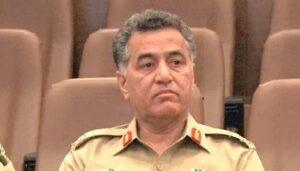Fitch Ratings has outlined that Pakistan’s ability to continue progressing with structural reforms will be a decisive factor to shape his credit perspective in the coming years.
As the country aims to restore economic stability and reinforce external financial reserves, the success of these reforms will be essential to maintain access to multilateral and bilateral financing, particularly the International Monetary Fund (IMF).
The recent economic advances in Pakistan have been supported by a series of political decisions, including the cutting of the State Bank of Pakistan in the policy rates at 12% on January 27, 2025. This movement reflects the improvements in inflation management , with a fall in consumer prices just over 2 % year after year in January 2025, of almost 24 % in the fiscal year24.
Fitch stressed that this disinflation trend, together with the stability of the exchange rate and a narrow monetary policy position, has reduced domestic demand and external financing needs, which provides relief to the country’s financial situation.
Positive growth in structural settings
The perspective for Pakistan’s economy in fiscal year 2000 seems optimistic, with Fitch forecasting a 3.0% growth of real GDP. The country’s efforts to absorb the configuration of stricter policies have allowed them to benefit from lower interest rates, and the growth of the private sector credit has become positive in real terms for the first time since June 2022.
Pakistan’s current account has also seen an improvement, with a surplus of approximately USD 1.2 billion in the six months until December 2024, compared to a deficit in the previous fiscal year. Strong remittances, solid agricultural exports and foreign exchange reforms have contributed to this positive change.
However, Fitch said that, although the reserves reached $ 18.3 billion by the end of 2024, equivalent to approximately three months of current external payments, Pakistan still faces important external financing needs. The country has more than $ 22 billion in public external debt that matured in fiscal year 2015, including $ 13 billion in bilateral deposits.
Fitch expects Pakistan bilateral partners, including Saudi Arabia and the United Arab Emirates, honoring their commitments to transfer these funds, but external liquidity remains a key concern.
Challenges ahead: financing and reforms
The Pakistan credit profile perspective depends on its ability to ensure sufficient external financing and continue its structural reform efforts. The Government has budgeted for USD 6 billion in multilateral funds for fiscal year 2015, but much of this will be used to refinance the existing debt.
Recent ads, such as a 10 -year frame of $ 20 billion with the World Bank group, represent positive steps, but will require careful management.
Fitch emphasized that, although fiscal reforms are moving forward, Pakistan faces challenges to meet the objectives of the IMF, particularly in the areas of growth of fiscal income and the timely implementation of the legislation on the Agricultural Income Tax.
Delays in structural reforms could complicate the country’s efforts to maintain a stable economic trajectory.
Perspectives: Risks and opportunities
Looking towards the future, Fitch believes that positive qualification actions for Pakistan could be driven by a sustained recovery in foreign reserves, decreased external financing risks or the implementation of online fiscal consolidation measures with the IMF commitments.
However, any delay in IMF reviews or worsening external liquidity could lead to negative credit actions.
In conclusion, although Pakistan has made significant progress to address its economic challenges, the way to follow continues to depend on the continuous implementation of structural reforms, the stabilization of external financing and the country’s capacity to administer large maturities of the public debt in the Next fiscal year.
The current reform agenda will be key to guaranteeing a stable perspective for the country’s credit profile.




